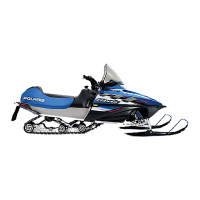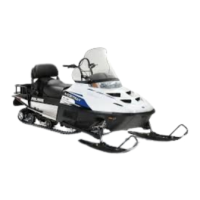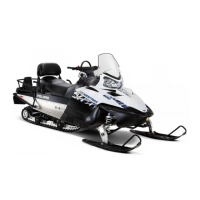8.6
Steering and Suspension Systems
9923396 - 2007-2012 EDGE/Widetrak LX Service Manual
©2011 Polaris Sales Inc.
Adjustable Shocks
Snowmobiles equipped with adjustable Ryde FX shocks
allow the driver to make adjustments to the compression
valving by turning the screw on the shock.
Locate the adjustment screw near the base of the shock.
By turning the screw clockwise (a small screwdriver or
dime work well), the compression pressure is increased,
stiffening the ride. To soften the ride, reduce the
compression by turning the screw counter-clockwise. A
great deal of ride performance is accomplished with a
mere 1/2 to 1 turns. There are approximately 3 full turns of
adjustment available.
If the suspension is “bottoming”, tighten the compression
screw clockwise in 1/2 turn increments until the bottoming
stops. Backing off 1/4 turn counter-clockwise at this point
should give you the best possible ride ensuring use of the
full travel of the suspension. The opposite procedure
should be used if the suspension is too stiff upon initial set-
up.
If bottoming continues after the screw is turned in full
clockwise, the compression spring should be adjusted
with the threaded adjustment collar. Back the screw out to
the original starting position after the compression spring
has been adjusted.
Riding conditions are ever changing. Keep in mind the
compression damping adjustable screw can be adjusted
at any time to achieve the best possible ride in any
condition.
NOTE: Install shock so the adjustment screw is
facing inwards.
FRONT SUSPENSION / STEERING
Setup and Adjustments
Spring preload is one of the adjustment options which
affects ride. Preload is the amount of pressure at which the
spring is held. The longer the installed length of the spring,
the less the amount of pre-load; the shorter the installed
length of the spring, the more the amount of pre-load. An
increase in IFS shock spring pre-load will result in an
increase in ski pressure.
To adjust front spring preload on threaded adjust models,
grasp the spring and turn in a clockwise direction (as
viewed from the bottom of the shock) to increase the
preload. Turn in a counterclockwise direction to decrease
preload.
When adjusting, be sure springs on both the left and right
sides of the machine are at the same adjustment.
For the best ride the spring preload should be as low as
possible. Set the preload to use the full travel of the ski
shock with occasional light bottoming. To determine if your
machine is using full travel, push the shock jounce bumper
down as far as it will go on the shock rod and test ride the
machine.
The bumper will move up on the rod in direct relation to the
amount of travel. For example, if the shock travel is full, the
bumper will be seated at the top of the shock.
Remove the existing spring and install the next highest
rate spring, or reduce the preload on the existing spring
and change the shock valving to obtain the desired effect.
If the plastic nut is unscrewed from the threaded body
the nut will break. Always leave one thread showing
above the plastic nut or the spring coils will stack,
resulting in damage.
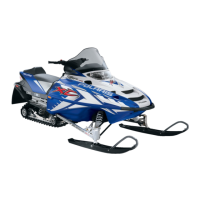
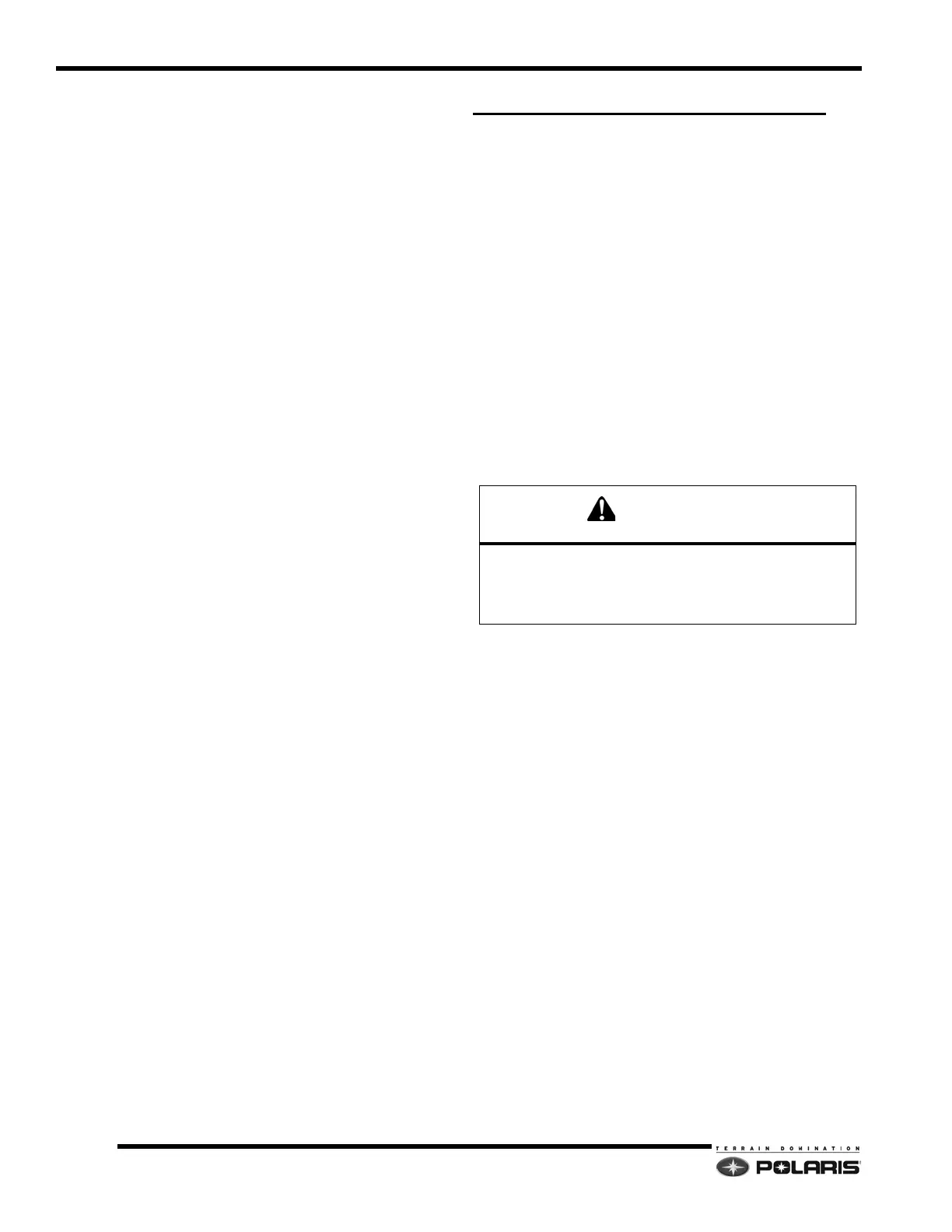